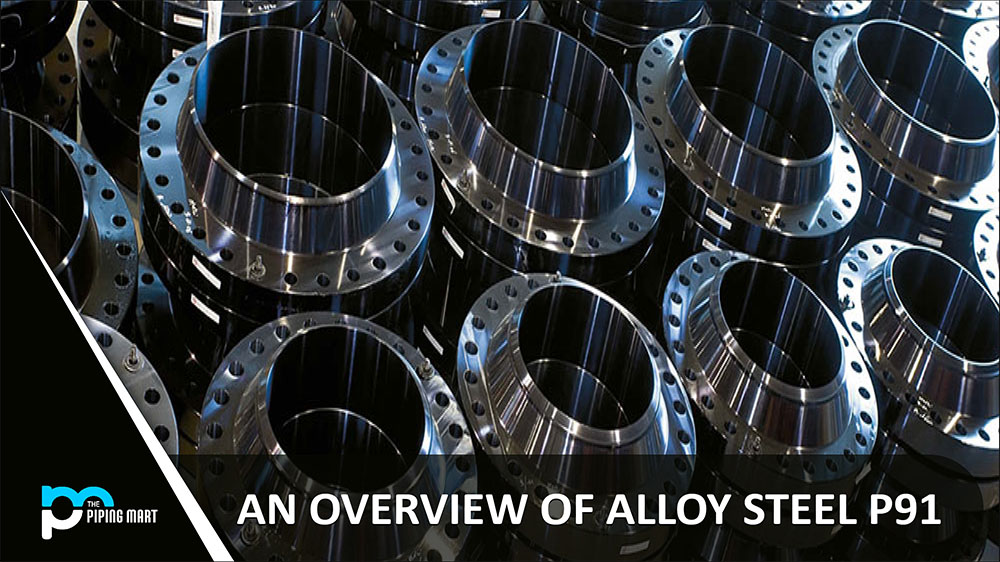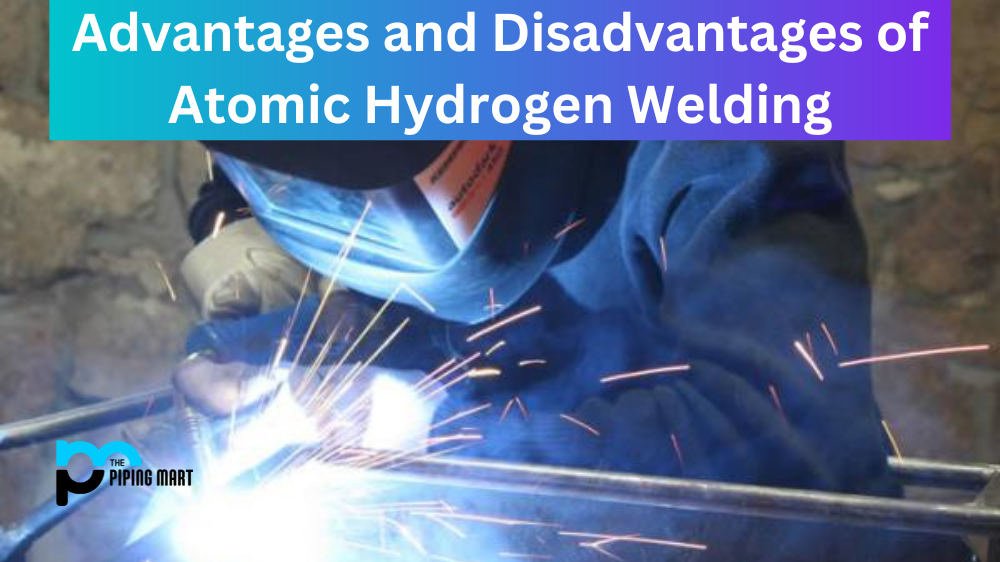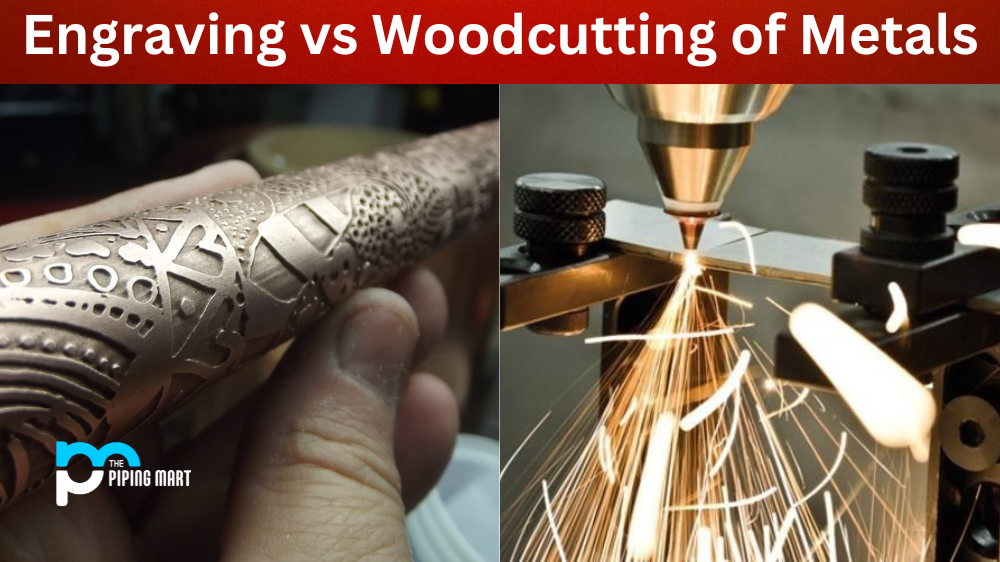What is Alloy Steel P91?
With the development of technology, the strength of industry-standard materials has increased significantly. A common material for high thermal applications is T91 grade material, also known as P91. From 570°C to 600°C, the steam leaving the superheater’s modern capacity boiler ranges from 170 to 230 bar. To readily endure the harsh conditions, the final stage of this superheater will be transported to the turbine using pipes and steam. It needs primary materials that have strong physical characteristics and a long lifespan to enable creep resistance. Strength-Enhanced Ferritic Steel (CSEF), combined with modern Chromium-Molybdenum Steels, has many applications and is used extensively worldwide. It improves the performance of new materials with outstanding material characteristics, even at high temperatures.
Alloy Steel P91 is considered unique because of additional features for advanced chromium-molybdenum pipes with tube options, including 9 CrMoV, boron-doped materials, and tungsten. These grades are in the 92–122, 23–24, and higher ranges. The CSEF steels are distinct, according to P(T)91. With a higher chromium content, steel is a quite different substance widely employed in various applications. Therefore it primarily calls for primary usage with more excellent care.
The second-best option for enabling more applications to excellence is the P22 Grade. Compared to grade 90, which has 5% chromium, grade 91 primarily contains 9% and 1% molybdenum. Chromium increases oxidation resistance, which mainly strengthens materials at higher temperatures. Molybdenum primarily boosts creep resistance to make it possible for higher-quality manganese and nickel to enable the highest possible rise in steel hardness. The creation of alloy steel mostly takes place at a normalized temperature of around 1050 °C and cooling to around 200 °C thanks to the extensive usage of alloying materials. The metal will then be tempered at 760 °C, its melting point. Temperatures, along with cooling rates, are typically very significant. Additionally, it would create the microstructure needed to effectively increase the qualities of creep strength.
What is ASTM A335 P91 Pipe?
The ferritic alloy steel A335/SA335 P91 has extremely high strength characteristics that do not degrade over time and are creep-resistant. It is also referred to as chrome moly pipe or 9 Cr 1 Mo steel depending on its chemical makeup.
Grade P91 is far stronger than its predecessors, the T22 or P22 Grade, and can withstand temperatures up to 600 °C. Manufacturers can raise the operating temperature to a greater level, increasing efficiency and resulting in a thermal fatigue life that is almost ten times higher. Additionally, thinner elements can be designed since oxidation temperature limitations are higher. P91 generally permits a minimum 2-to-1 reduction in wall thickness. A thinner wall utilizes less filler metal, shorter welding time, and lighter hanger loads. These advantages are made feasible by the steel’s high chromium concentration. Grade 91 has 9% chromium and 1% molybdenum, while the next-best P22 Grade has 2.5% chromium.
Types of Alloy Steel P91 Pipes:
There are two varieties of Alloy Steel P91 Pipes available in the market. Type 1 and Type 2 exist. The most common type employed is type 2. Carbon, along with manganese, phosphorus, sulfur, silicon, 8% chromium, and molybdenum, makes up the majority of the material’s makeup. In lower amounts, more alloying elements, such as vanadium and nitrogen, along with nickel, aluminum, columbium, titanium, and zirconium, are present in the composition. The pipes adhere to the A335 specification. However, A369 can also apply to pipes that are forged or bored. Boilers, heaters, reheater lines, gas processing equipment, and the majority of oil services all employ Material P91 Pipe. Pipes must be preheated before being welded. Another alternative step for these pipes is post-baking. Before application, the material must be cooled to below 100 degrees Celsius after welding. The material composition of the P91 Seamless Pipe results in minimum yield strength of 415MPa and minimum tensile strength of 585MPa. The P91 Steel Pipe varieties’ improved strength and corrosion resistance are mostly due to the chromium and molybdenum content. The nominal bore sizes range from 1/8 inch to 24 inches. Variations in the outer diameter and wall thickness cause the schedules to range from schedule 20 to XXS. The P91 Chrome Pipe’s wall thickness can be between 2mm and 14mm, and its length can go up to 16000mm. There are pipes in various shapes, including round, square, rectangular, hydraulic, and others, with plain, beveled, and threaded ends.
Characteristics of Type 2:
A chrome-moly alloy with exceptional strength and temperature resistance is P91. Because it is intended to have greater creep strength, it is a creep strength-improved ferritic (CSEF). This metal is produced by normalizing it at 1050 °C, cooling it to 200 °C, and tempering it at 760 °C. This procedure is the main contributor to the creep strength and durability of P91. Vanadium, molybdenum, and 9% chromium make up the metal designated P91. The use of chromium increases thermal strength and oxidation resistance. The molybdenum improves the elasticity, wear resistance, and high-temperature creep strength. Additional features of ASTM A335 P91 Type 2 to be aware of are:
- Non-deteriorating
- reduction in thickness
- higher creep resistance
Chemical Requirments of Alloy Steel P91:
Chrome, also known as chromium, increases oxidation resistance and enhances high-temperature strength. At room temperature, chrome also increases tensile, yield, and hardness. When it comes to preventing oxidation at high temperatures, it is practically irreplaceable. Hardenability, along with strength, wear resistance, elastic limit, and impact resistance, are all improved by molybdenum. Molybdenum is the best additive for increasing high-temperature creep resistance or creep strength. It inhibits grain growth, lessens embrittlement, and increases softening resistance in chromium steel. It also increases the steel’s resistance to corrosion and avoids pitting.
Smaller amounts of nickel and manganese are also present, and they improve the steel’s ability to harden. The management of Nitrogen (N) and the inclusion of Vanadium (V) and Columbium or even Niobium (Cb/Nb) significantly improve creep strength. The process by which this alloy steel is created is more significant than the alloying components. After normalizing at 1050 °C and air cooling to 200 °C, the steel is made. Then, it is heated to 760 °C to temper it. Temperatures and cooling speeds create the microstructure, resulting in high creep strength qualities.
Heat Treatment and Micro Structure of P91:
Heat treatment for tempering is what this is. P91 is normally heat treated by normalizing at 1040–1080°C and tempering at 730–800°C. Normalizing involves heating the steel to a temperature approximately 100°C higher than the AC3 temperature to create austenite and dissolve carbonitrides, followed by air cooling. When air-cooled, austenite typically changes into martensite with a high density of dislocations. Following normalization, the steel is heated at a lower temperature than AC1 to soften it by recovering more dislocations and precipitating fine carbonitrides. Depending on the tempering temperature, the desired strength-toughness balance can be attained. For P91, hardness levels must fall between 190 Brinell and 200 Vickers after the tempering heat treatment. After normalizing and tempering, the P91 microstructure under a transmission electron microscope (TEM) comprises laths with a high density of dislocations and tiny carbonitrides. Very fine carbonitrides are mostly dispersed in the matrix within the lath and at the boundaries.
In contrast, carbides with M rich in Cr are primarily distributed at lath, block, packet, and previous austenite grain boundaries. Due to the coexistence of fine precipitates, lath, block, and subgrains, P91 has a high creep strength. The tiny precipitates stabilize the boundary between the lath and the block. Inadequate creep strength at high temperatures is caused by the low nitrogen and high aluminum starting strengths associated with tempering heat treatment. After tempering heat treatment, the hardness of P91 with low nitrogen and high Al, or a low N/Al ratio, is low and falls below 200 VHN. P91, with a relatively high Al content, is more prone to cracking early in its life. The recommendations of the Electric Power Research Institute call for cautious element control to avoid premature rupture. Ni is another issue related to alloying elements in P91. Ni impacts several P91 parameters, including the A1 transformation temperature and the rate at which carbonitrides coarsen during prolonged exposure to high temperatures, which affects creep strength and fracture toughness.
With increasing Ni concentration at 600°C, the long-term creep rupture strength of P91 decreases more noticeably. The ASME/ASTM specifications now call for a level of 0.4% Ni, but the EPRI recommendation recommends less than 0.2% Ni. When P91 is subjected to temperatures in the typical working range of power plants, where recuperation and recrystallization of martensitic microstructures take place dependent on temperature and time, cold work might destabilize the microstructure and hence diminish the creep strength of P91.
After heat treatment, bending to 10–30% strain in the cold enhances hardness in direct proportion to the cold strain but shortens creep life. Use of specimens collected from the tension zone of the curve with the axis of the specimen transverse to the strain direction and parallel to the tension surface allowed for creep rupture testing to be performed at 8.7 ksi (60 MPa) and 14.5 ksi (100 MPa) at an operating temperature close to 600°C. The amount of cold strain induced impacts how much creep life is reduced during cold work. The entire length of tubing should be re-normalized and tempered when the amount of tensile strain caused during bending surpasses 20%. The ASME code now limits the cold strain that P91 material can withstand without heat treatment.
What are the advantages of Alloy Steel P91?
The materials are often employed in numerous successful power plant operations. The 9 Chromium 1 Molydbedum steel with additional composition is another name for metal. Grade 91 largely displays the increased temperature strength at roughly 600 °C, whereas T22 or P22 Grade is its predecessor. Because oxidation temperature mostly restricts to higher characteristics, it also efficiently enables power plant designers to thoroughly engineer the components. In reality, because it primarily has reduced thickness, it also effectively enables designers of power plants to readily develop the elements with superheater coils, steam piping, and headers. The metal also offers a ten times stronger thermal stress life compared to other metals. Additionally, it efficiently raises the power plant’s working temperature while also increasing efficiency.
When contrasted to the P22 Grade and other grades, alloy steel is typically not tolerable due to changes in the microstructure. The quantity of carbon and iron that alloy steel primarily comprises varies. These have additional components similar to carbon steel. Manganese and silicon, chromium, vanadium, boron, and nickel are added as alloy steel’s constituent elements. The alloy steel has a greater variety of value compositions for the elements offered based on various ranges with additional attributes. Usage or implementation of alloy steel typically entails acquiring the steel’s well-defined physical qualities. Low and high alloy steels are the two main categories of alloy steel. With the proportion of the incorporated elements at 8%, alloy steel is regarded as having high alloy characteristics. Low alloy steel is created when these components are coupled with a range of holes smaller than 8%. The majority of factories exclusively employ low-alloy steel.
Alloy Steel P91 is produced using exacting and stringent industrial standards, primarily adhering to the criteria for heat treatment. Additionally, it has been claimed that the various utilization stages determine when base materials fail. Alloy Steel P91 is primarily utilized for a variety of applications and is created with extreme precision. It is also completely reinstated with a superior microstructure. Comparing Alloy Steel P91 to its predecessor, P22, reveals significantly different characteristics. It would be much simpler to assess the impact of variation based on treatment on characteristics, but P91 is not a good candidate. Precision heat treatment during the fabrication and construction phases primarily influences microstructure. It also restores the microstructure to its ideal size and shape. Alloy Steel P91 is chosen based on tanker linings, which offer complete protection against common consumption and excellent return quality and add structures effectively. P91 materials are frequently used for various purposes due to the availability of a wide range of welding consumables and other national specifications.
Welding of Alloy Steel P91:
Steel Welding P91 is considered one of the best processes in welding, which is consistently used in all industries worldwide. As it relates to the microstructure temperatures, post-weld heat, sustaining inter-pass temperatures, and other factors, this process is crucial for the P91 Grade. Additionally, combining this induction technique with thick-walled pipes is a smart move. However, the heating process better controls the inner and outer diameters. This is the best procedure for welding steel with alloys and heating the coils because it maintains the inter-pass temperature. The same amounts of nickel and manganese significantly influence heat treatment temperatures and cooling speeds. In addition, the parent material’s composition matches that of the welding electrodes utilized in this series.
Effect of Water:
The unheated steel has been treated with hydrogen with remarkable affinity. Hydrogen exacerbates corrosion and cracking with increased heat in the water. In actuality, any moisture has been eliminated by preheating. The post-weld heat treatment and weld heat treatment were completed as rapidly as feasible to prevent any contact with water. To get the desired results, the cross sections have complex geometry.
P91 Alloy Steel Pipes work well in a wide range of applications. The petrochemical and power industries are where it is most frequently employed. Amardeep Steel Center is one of the most known producers, suppliers, and exporters of these seamless P91 alloy steel pipes, mostly used in high-temperature applications. As part of AST A335, the P91 alloy steel pipe must be flexible and subject to similar shaping techniques such as fusion welding and flanging. The steel material must satisfy the requirements for chemical composition, tensile strength, and hardness. P91 typically permits a wall thickness reduction of at least 2-to-1. Lighter hanger loads, faster welding, and less filler metal usage are all benefits of thinner walls.
These advantages are made possible by the high chromium concentration of this steel. Grade 91 has 9 percent chromium and 1% molybdenum, while the next-best P22 Grade has 2.5 percent chromium and 1% molybdenum. The chrome-moly alloy metal P91 is very durable and heat resistant. It is ferritic that has been improved for higher creep strength (CSEF). This metal is produced by normalizing at 1050 °C, air cooling to 200 °C, and tempering at 760 °C. The main reason for P91’s creep resistance and longevity in this process.
How is Alloy Steel P91 used to resolve welding problems in power plants?
It has long been understood that reducing the solution treatment temperature range from 860 to 900 °C significantly negatively impacts creep rupture strength but has little impact on the strength at room temperature of grade 91 steel. Therefore, it is not surprising that a significant increase in creep rupture strength for grade 91 steel has been attained by raising the solution treatment temperature between 927 and 1093 °C, with an additional benefit coming from a decrease in tempering temperature from 760 to 732 °C.
The parent steel’s creep life was increased by more than a factor of three with normalization at 1150 °C and a twofold tempering treatment at 660 °C. As the creep test temperature was increased to 650 °C, there was undoubtedly a lessening of the improvement that was seen and corroborated by modeling. The nucleation of extra MX particles during heating for the second thermal cycle is probably made possible by double tempering at such a low temperature. However, lowering the tempering temperature will probably result in less toughness. It has been demonstrated that lowering the C: N ratio can result in a further significant improvement in creep performance. It will be interesting to observe if these benefits are sustained over extended lifetimes because the beginning microstructure will impact short-term creep behavior significantly more than it would influence long-term behavior.
A family of filler metals that match the compositions and mechanical characteristics of the extreme creep strength precipitation-hardened nickel-based alloys will need to be developed, just like the 9-15%Cr steels. For the welding of alloy, there is currently just one commercially available filler metal that matches the composition and characteristics of the parent metal. Therefore, a significant development effort will be needed before the widespread usage of nickel-based alloys can be considered as a possibility.

Pipingmart is B2B portal specializes in industrial, metal and piping products. Also, share latest information and news related to products, materials and different types grades to help business dealing in this industry.




